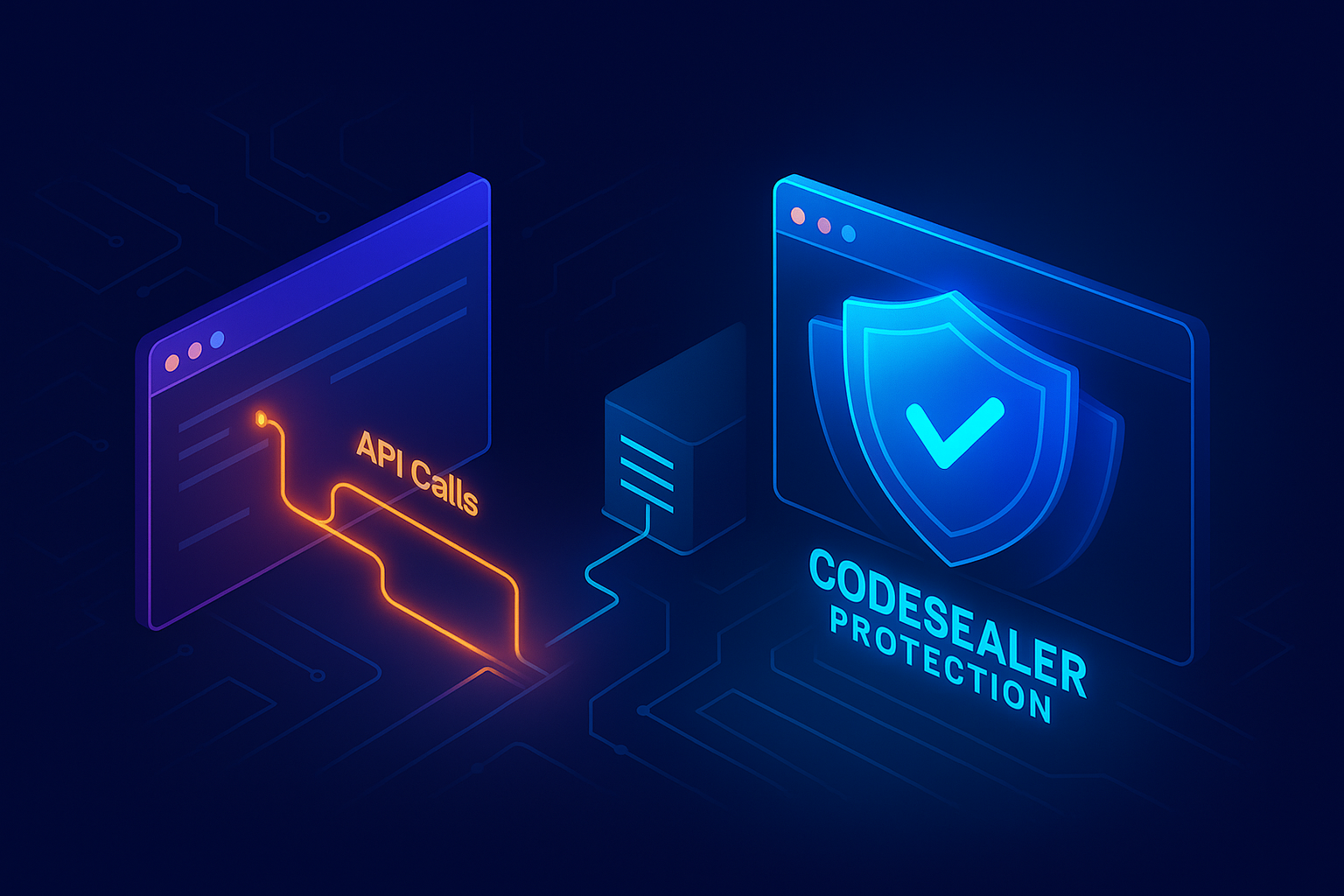
The New API Attack Surface: How Frontend Exposure Fuels Backend Exploits
Executive Summary
Modern web applications expose more than most teams realize. While APIs power today’s rich user experiences, the frontend often reveals too much—API routes, business logic, request patterns, and even authentication flows. This visibility is a goldmine for attackers.
In this post, we explore how frontend exposure creates a wide-open attack surface for backend exploitation—and how Codesealer helps eliminate that surface entirely. If you’re building or securing web apps, it’s time to take a closer look at what you might be unintentionally exposing.
Your Frontend Is Telling Attackers Too Much
If you’re using frameworks like React, Angular, or Vue, your frontend is no longer just a visual layer—it’s the delivery mechanism for your business logic. What gets shipped to the browser includes:
- Full API request patterns
- Form structures and validation logic
- Session flows and even hidden fields
- Network calls with rich response data
And guess what? It’s all visible to anyone who opens dev tools. An attacker doesn’t need to guess how your application works—they can watch it work in real time.
The Attack Starts with Observation
This kind of visibility makes reconnaissance easy. Tools like browser dev tools, Burp Suite, and OWASP ZAP help attackers explore your app just like a developer would. Within minutes, they can:
- Identify API endpoints and parameters
- See how requests are structured
- Replay actions like logins, updates, or purchases
- Tweak values to test for weak backend validation
For example, if your UI prevents negative quantities in a purchase form, but the backend doesn’t double-check? An attacker could change the value in-flight and cause financial damage—without exploiting a traditional vulnerability.
Obfuscation Isn’t Real Protection
Sometimes teams respond to this risk with code obfuscation or minification. But this is just security through obscurity. Obfuscation doesn’t stop anyone with technical knowledge—it just slows them down.
Attackers can de-minify JavaScript, inspect network traffic, and reverse-engineer app behavior. If your requests and endpoints are readable, they’re exploitable.
Codesealer Solves This at the Root
At Codesealer, we believe that if attackers can see and interact with your APIs, they can eventually break them. That’s why we take a different approach—one that makes visibility itself the problem to eliminate.
Here’s how we do it:
🔒 We encrypt everything that matters
Request payloads, API paths, and sensitive data are all encrypted before they hit the network. Even with full browser access, an attacker sees nothing usable.
🧩 We hide the app’s structure
Our solution obscures API routes entirely. That means no predictable URL paths for attackers to probe. Every request is context-bound and authenticated.
🛡️ We secure the client
Codesealer uses a secure bootloader that validates the integrity of your app before it runs, making reverse engineering and code tampering much harder.
🔁 We block replay and proxy attacks
Common tools like Burp Suite simply don’t work. Replay attempts are invalid. Tampered requests fail. This breaks the typical toolchain of an attacker.
No Visibility, No Exploit
Here’s the bottom line: If attackers can’t see how your app behaves, they can’t exploit it. By encrypting what matters and cutting off access to internal flows, Codesealer removes the attack surface created by exposed frontends.
Security isn’t just about detection anymore. It’s about denial of opportunity—and that starts by denying visibility.
Final Thought
The frontend is no longer just a UI layer—it’s part of your security perimeter. If your APIs are discoverable and your logic is exposed, you’re leaving the door wide open for targeted backend attacks.
Codesealer closes that door—by removing visibility, blocking tampering, and forcing attackers to play by rules they can’t bend.
